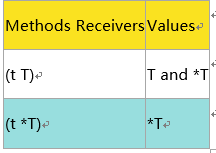一、接口的定义和好处
我们都知道接口给类提供了一种多态的机制,什么是多态,多态就是系统根据类型的具体实现完成不同的行为。
以下代码简单说明了接口的作用
package main import ( "fmt" "io" "net/http" "os" ) // init 在main 函数之前调用 func init() { if len(os.Args) != 2 { fmt.Println("Usage: ./example2 <url>") os.Exit(-1) } } // main 是应用程序的入口 func main() { // 从Web 服务器得到响应 r, err := http.Get(os.Args[1]) if err != nil { fmt.Println(err) return } // 从Body 复制到Stdout io.Copy(os.Stdout, r.Body) if err := r.Body.Close(); err != nil { fmt.Println(err) } }
①注意下 http.Get(os.Args[1]) 这里他的返回值r是一个Response对象的指针,也就是请求的结果
做过web开发的都知道,下面是源代码
func Get(url string) (resp *Response, err error) { return DefaultClient.Get(url) }
以下是Response的结构,这里有一个Body,是一个io.ReadCloser类型的,这是啥?往下看
type Response struct { Status string // e.g. "200 OK" StatusCode int // e.g. 200 Proto string // e.g. "HTTP/1.0" ProtoMajor int // e.g. 1 ProtoMinor int // e.g. 0 Header Header Body io.ReadCloser ContentLength int64 TransferEncoding []string Close bool Uncompressed bool Trailer Header Request *Request TLS *tls.ConnectionState }
ReadCloser是一个接口哦!Reader和Closer也同样是接口,接口里面都是方法。
type ReadCloser interface { Reader Closer }
Reader接口
type Reader interface { Read(p []byte) (n int, err error) }
Closer接口
type Closer interface { Close() error }
②io.Copy(os.Stdout, r.Body) 这个方法,查看源码如下
func Copy(dst Writer, src Reader) (written int64, err error) { return copyBuffer(dst, src, nil) }
这里的输入参数dst是一个实现了Writer接口的对象,而src则是一个实现了Reader接口的对象,由此,我们可以知道为什么io.Copy(os.Stdout, r.Body)的第二个参数可以传r.Body了,因为①中展示了Body这个对象是实现了Reader接口的。同理os.Stdout对象这个接口值表示标准输出设备,并且已经实现了io.Writer 接口
补充:http://www.flysnow.org/2017/05/08/go-in-action-go-reader-writer.html 这篇文章解释了stdout是怎么样继承了Reader和Writer接口的。
os.Stdout返回的是一个*File, File里面只有一个*file,而*file是实现了下面两个接口的,下面是Go的源码
func (f *File) Read(b []byte) (n int, err error) { if err := f.checkValid("read"); err != nil { return 0, err } n, e := f.read(b) return n, f.wrapErr("read", e) } func (f *File) Write(b []byte) (n int, err error) { if err := f.checkValid("write"); err != nil { return 0, err } n, e := f.write(b) if n < 0 { n = 0 } if n != len(b) { err = io.ErrShortWrite } epipecheck(f, e) if e != nil { err = f.wrapErr("write", e) } return n, err }
所以说*File本身是继承了Writer和Reader接口的类型。
综上有了参数或者返回值是接口类型,就不用关注于具体的返回类型是什么,只要实现了的接口的方法都是可以被接受的。
二、接口值和实际对象值是怎么转化和存储的
我们都知道 如果一个类型实现了某个接口,那么这个类型的实际值是可以赋值给一个接口的变量的。
在C#中是这样的,例如将一个List赋值给一个IEnumerable类型的变量
IEnumerable<int> list = new List<int>();
在Go语言中也是这样的,请看下面的代码
package main import ( "fmt" ) type eat interface{ eat()(string) } type Bird struct { Name string } func (bird Bird) eat()string{ return "Bird:"+bird.Name+" eat" } func print(e eat){ fmt.Println(e.eat()) } // main 是应用程序的入口 func main() { bird1:= Bird{Name:"Big"} bird2:= new(Bird) bird2.Name = "Small" print(bird1) print(bird2) var eat1 eat eat1 = bird1 print(eat1) }
结果
Bird:Big eat
Bird:Small eat
Bird:Big eat
这里定义了一个eat接口,有一个Bird的类型实现了该接口,print函数接受一个eat接口类型的参数,
这里可以看到前两次直接把bird1和bird2作为参数传入到print函数内,第二次则是声明了一个eat接口类型的变量eat1,然后将bird1进行了赋值。换句话说接口类型变量实际承载了实际类型值。这里是如何承载的呢?
这里我们把 eat1 称作 接口值,将bird1称作实体类型值,eat1和bird1的关系如下:

接口值可以看成两部分组合(都是指针)而成的。第一部分是【iTable的地址】第二部分是【实体类型值的地址】
关于interface的解析:
https://www.cnblogs.com/qqmomery/p/6298771.html
三、方法集的概念
简单的讲:方法集定义了接口的接受规则
举例说明:
package main import ( "fmt" ) type notifier interface { notify() } type user struct { name string email string } func (u user) notify() { fmt.Printf("Sending user email to %s<%s>\n", u.name, u.email) } func sendNotification(n notifier) { n.notify() } func main() { u := user{"Bill", "[email protected]"} sendNotification(u) }
如上代码,定义了一个notifier接口,有一个方法nitify()方法,定义了一个user类型的结构,实现了notify方法,接收者类型是user,即实现了notifier接口,又定义了一个sendNotification方法,接收一个实现notifier接口的类型,并调用notify方法。
func (u *user) notify() { fmt.Printf("Sending user email to %s<%s>\n", u.name, u.email) } func main() { u := user{"Bill", "[email protected]"} sendNotification(u) }
现在修正一下代码,将接收者改为user的指针类型。此时会发现原来调用的地方会出现错误。
cannot use u (type user) as type notifier in argument to sendNotification:user does not implement notifier (notify method has pointer receiver)
不能将u(类型是user)作为sendNotification 的参数类型notifier:user 类型并没有实现notifier(notify 方法使用指针接收者声明)
为什么会出现上面的问题?要了解用指针接收者来实现接口时为什么user 类型的值无法实现该接口,需要先了解方法集。方法集定义了一组关联到给定类型的值或者指针的方法。
定义方法时使用的接收者的类型决定了这个方法是关联到值,还是关联到指针,还是两个都关联。
补充资料:
https://studygolang.com/articles/9681
https://www.kancloud.cn/liupengjie/go/570054
以下是Go语言规范中的方法集:

上表的意思是:类型的值只能实现值接收者的接口;指向类型的指针,既可以实现值接收者的接口,也可以实现指针接收者的接口。
从接收者的角度来看一下这些规则

如果是值接收者,实体类型的值和指针都可以实现对应的接口;如果是指针接收者,那么只有类型的指针能够实现对应的接口。
所以针对上面的问题,将传入的u变成传入地址就可以了(可以套用一下表格,接收者*user对应的values是*user,所以传地址对应上面表格浅蓝色部分)
func (u *user) notify() {
fmt.Printf("Sending user email to %s<%s>\n",
u.name,
u.email)
}
func main() {
u := user{"Bill", "[email protected]"}
sendNotification(&u)
}
综上我们总结一下,也就是说如果你的方法的接受者的类型是指针类型,那么方法的实现者就只能是指向该类型的指针类型,如果方法的接收者是值类型,那么方法的实现者可以是值类型也可以是指向该类型的指针类型。
面试题一个,下面的代码能否编译通过?
package main import ( "fmt" ) type People interface { Speak(string) string } type Stduent struct{} func (stu *Stduent) Speak(think string) (talk string) { if think == "bitch" { talk = "You are a good boy" } else { talk = "hi" } return } func main() { var peo People = Stduent{} think := "bitch" fmt.Println(peo.Speak(think)) }
答案:不能。
分析:首先Speak的方法的接收者是*Student , 根据上面的规则,那么实现该方法的实现者只能是 *Student,但是 var peo People = Student{} 这里却将Student作为实现者赋值给了接口,这里就会出现问题。
补充:书上解释这个规则,为什么会有这种限制的原因,说的是golang不是总能找到值的地址,这个地方不是很明白,可以参考下面的资料进行分析https://segmentfault.com/q/1010000015316158
简单解释:就是因为 Integer(25).pretty() 将被优化成一个整数(常量)25 调用 pretty 函数 。
里面涉及到了一个 可寻址对象的问题,可以参考下面的连接
https://colobu.com/2018/02/27/go-addressable/
下面的连接,说明了为什么Integer(25) 将被优化成一个整数(常量)25
Because literal values are constants in Go, they only exist at compile time and don’t have an address.
https://www.ardanlabs.com/blog/2017/07/interface-semantics.html
https://segmentfault.com/a/1190000002687627 字面量的定义
Integer(25) 是一个字面量,而字面量是一个常量,所以没有办法寻址
四、多态
// Sample program to show how polymorphic behavior with interfaces. package main import ( "fmt" ) type notifier interface { notify() } // user defines a user in the program. type user struct { name string email string } func (u *user) notify() { fmt.Printf("Sending user email to %s<%s>\n", u.name, u.email) } type admin struct { name string email string } func (a *admin) notify() { fmt.Printf("Sending admin email to %s<%s>\n", a.name, a.email) } // main is the entry point for the application. func main() { // Create a user value and pass it to sendNotification. bill := user{"Bill", "[email protected]"} sendNotification(&bill) // Create an admin value and pass it to sendNotification. lisa := admin{"Lisa", "[email protected]"} sendNotification(&lisa) } func sendNotification(n notifier) { n.notify() }
上面的代码很好的说明的接口的多态,user和admin都实现了notify方法,既实现了的notifier接口,sendNotification函数接收一个实现notifier接口的实例,从而user和admin都可以当作参数使用sendNotification函数,而sendNotification里面的notify方法执行根据的是具体传入的实例中实现的方法。